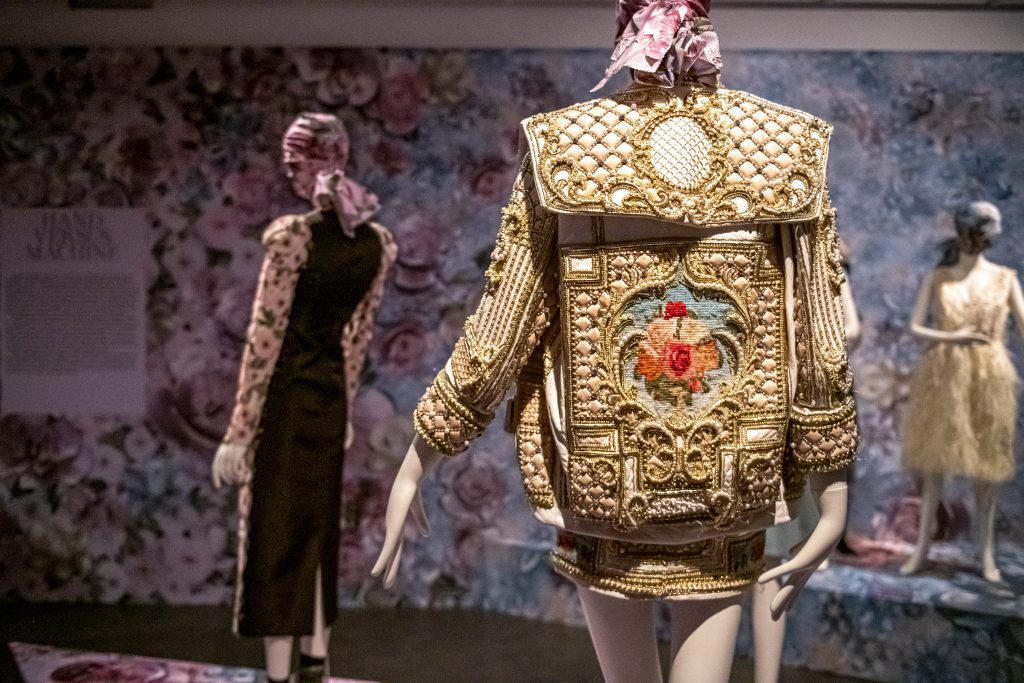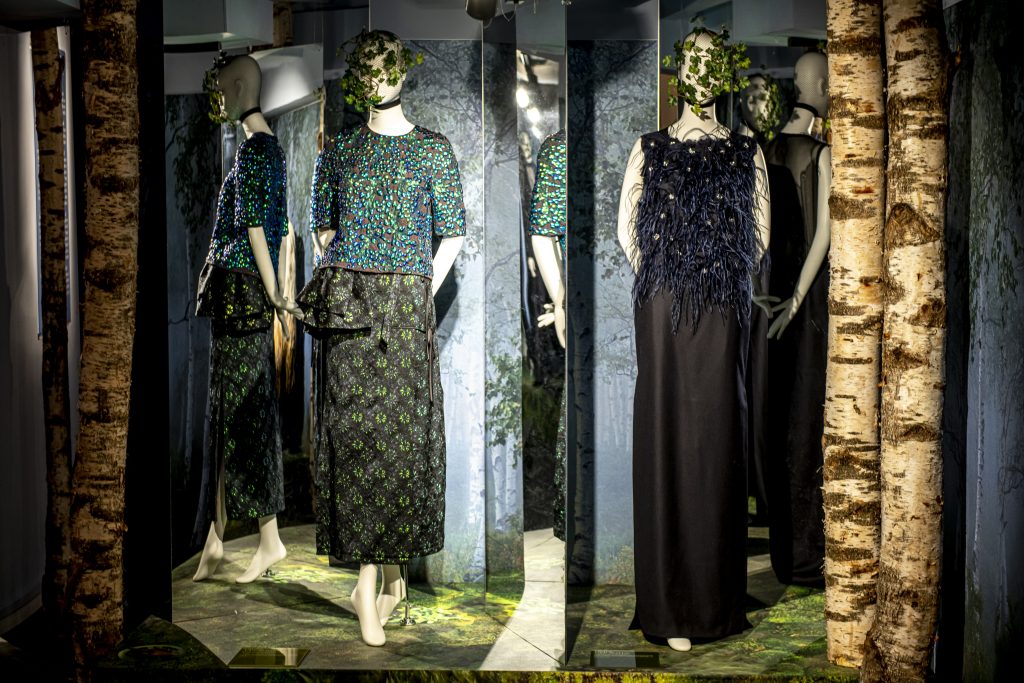On the other side of the spectrum, the exhibition highlights experimental techniques from recent years, such as laser cutting and 3D printing. This journey through time in the world of embellishment and decoration unravels the
technical aspect, tells the socio-economic story, and demonstrates the visual and aesthetic value of the creations. Fashion houses such as Patou, Lanvin, Dolce & Gabbana, Gucci, Dior, Balmain, Ann Demeulemeester, Iris van Herpen
and Alexander McQueen steal the show at the Hasselt Fashion Museum.
SMUK is not only a visual feast for the eyes. The exhibition has a unique way of introducing visitors to the various decoration techniques and their evolution. Thanks to a collaboration with MIA.H, it is possible to make a decorative pin or cuff link using modern techniques such as computer-controlled embroidery, laser cutting or 3D printing. The other chamber of wonder reveals the setting of a classic atelier studio as it was used by the embroiderer, feather maker, and flower maker.




